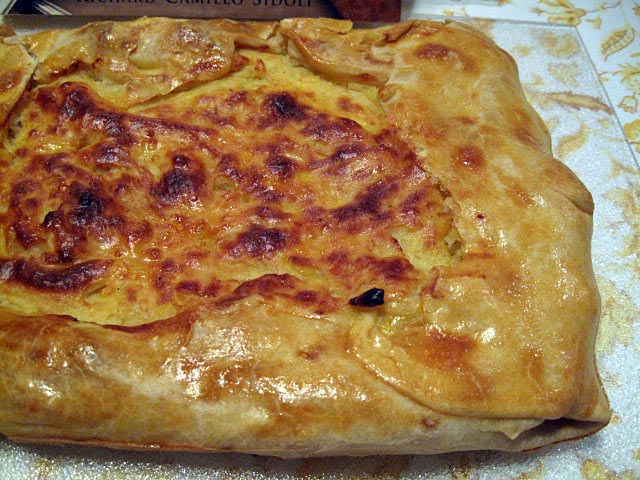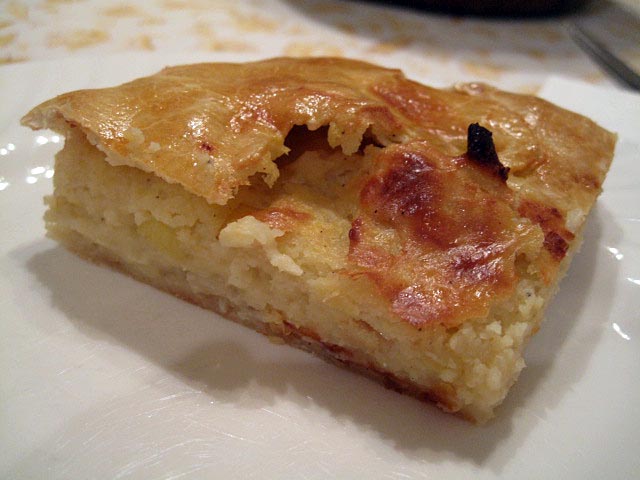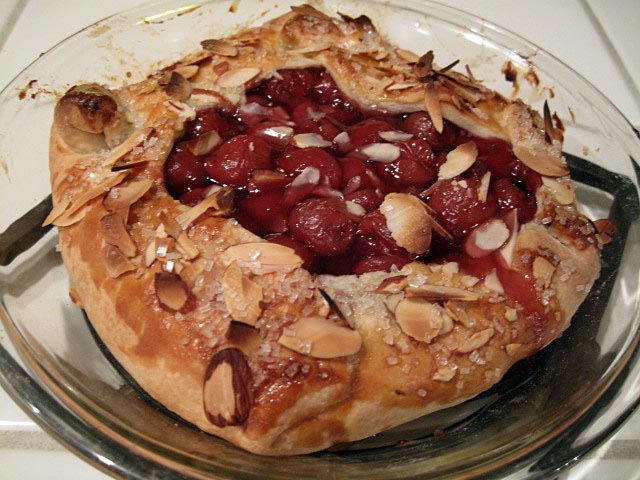“The Cooking of Parma,” by Richard Camillo Sidoli is the kind of cookbook I most enjoy. It has many marvelous recipes from one of the greatest food regions of one of the greatest food countries in Europe. It also presents a culinary history of the region, integrating the history of local foods and their preparation into the broader history of Northern Italy.
Alas, I have hardly scratched the surface of the delightful repertoire of this Italian province's cucina, but I have repeatedly made one recipe: “Torta di Patate.” This open-faced, rustic savory tart was for me an instant comfort food – perhaps because it's what a potato knish really wants to be when it grows up.

Torta Dough
|
Ingredient
|
Amount
|
|
Flour
|
2 cups
|
|
Salt
|
½ tsp
|
|
Water
|
½ cup plus 1 tablespoon
|
|
Olive oil
|
4 tablespoons plus ½ tsp
|
Basics of torta preparation
-
Preheat the oven to 425ºF.
-
In a medium mixing bowl, combine the flour and salt. Then add the water and 4 tablespoons of olive oil.
-
Mix to form a dough, but do not over-mix. The goal is not to develop the gluten.
-
Let the dough rest for at least 20 minutes. It can be left refrigerated overnight.
-
On a lightly floured board, roll out the dough thinly. (About the thickness of 2 sheets of paper)
-
Spread the remaining ½ tsp of olive oil in a 15 x 11 inch baking pan, and put the dough in the pan, leaving a 3 inch overhand on all sides.
-
Spread the filling over the dough, and fold the overhanging dough over the edges of the filling, leaving most of the center open.
-
Brush the torta with a beaten egg.
-
Bake until golden brown (about 25-35 minutes.)
Parma-style torta's can be filled with a variety of vegetable mixtures, and this cookbook gives recipes for several, including squash, rice and savoy cabbage. I've made them all, except for the torta di riso. We like the torta di patate best.
Filling for potato torta
|
Ingredient
|
Amount
|
|
Potatoes (russet or yukon gold)
|
2 ½ lbs
|
|
Butter
|
6 tablespoons
|
|
Onion, chopped
|
½ medium
|
|
Leek, chopped
|
2/3 cup
|
|
Parmigiano cheese, freshly grated
|
2/3 cup
|
|
Milk
|
¾ cup
|
|
Salt & pepper
|
To taste
|
|
Eggs
|
2 large
|
|
Torta dough
|
1 recipe
|
Procedure for preparing potato filling
-
Prepare torta dough, as above.
-
Boil, bake or microwave the potatoes until just tender.
-
Sauté the onions and leeks in the butter until soft but not browned.
-
Peel the potatoes and put them through a ricer into a large bowl.
-
Add the sautéed onions and leeks, the cheeses, milk and salt and pepper to the bowl and mix.
-
Beat the eggs. Add ¾ of them to the potato mixture, reserving the remaining quarter to brush the torta.
-
Assemble the torta as described above.
This mixture can be used immediately or kept , refrigerated, for use the next day.

Tortas are often eaten as antipasti, but we ate this as our main course for dinner, along with a green salad.
For dessert --- Well, what should follow a rustic savory tart? It has to be a rustic fruit tart!

Rustic sour cherry tart

Happy baking!
David
Submitted to YeastSpotting on SusanFNP's Wildyeastblog.